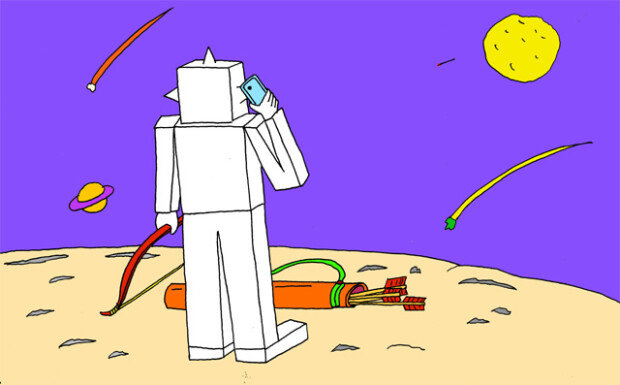You never hide under radar of GPS
You never hide under radar of GPS
Posted October. 09, 2020 07:37,
Updated October. 09, 2020 07:37

I used to receive an unwelcome message deep in the night while staying at a lab center in Saint-Nazaire, a small town in France on the Atlantic coast, last year. The ding-dong of text messages was an irritating interrupter in the bed time, writing, “Special offer! Pork belly 2,364 won per 100 grams and fresh mackerel five thousand won…” One of my peer professors suddenly received a notice message advising him to go take a COVID-19 test after casually visiting a bookstore in the Gwanghwamun area with his nephews on Aug. 15 this year. Indeed, we are living in the era of all-out surveillance where every step and move on any path you take is always kept track of if you carry around a mobile. The world is getting ever narrower and more transparent.
Every single move, albeit minor and petty, you make is synced with the rest of the world. You may not find any place to breathe easy. With your smartphone on, it is not your choice whether or not to stay connected to the rest of the world. The whole mechanism requires you to make your location data open and transparent if you want to have access to useful information. Powering off your mobile directly translates into complete refusal to communicate with others.
Such a high level of transparency in networks all comes down to GPS or Global Positioning System. No matter where you are, the system pinpoints your location and records velocity and time data. A GPS clock system on your mobile shares exact and accurate time data without allowing for any error and difference.
Globally, a total of 24 GPS artificial satellites provide location information and data to their ground stations. Almost 20,000 kilometers up above the ground, they revolve around the planet once for every 12 hours. Each artificial satellite is equipped with four atomic clocks with an error of only one second in up to 100,000 years.
GPS satellites send to ground receivers wave signals that indicate exact and accurate time and the satellites’ location information. A difference of time automatically occurs because it takes a bit of a second for wave signals to arrive at receivers on the ground. You can figure out how far an artificial satellite is from a ground receiver by multiplying the time gap by the speed of light. In physics, distance is time multiplied by velocity. An analysis of time data coming from four satellites tells you a location of any point in space. Military GPS reduces an error range to within one centimeter although generally a difference of 30 meters may occur.
GPS was first invented by the U.S. Defense Department for military purposes back in 1973. When a Korean Air commercial flight was shot down by a Soviet interceptor in 1983, the U.S. government allowed the private sector to have access to GPS data. Since Washington stopped mixing noise intentionally and strategically with signals around the 2000s, the accuracy of civilian-use standard location service has improved to be around less than 30 meters. Nowadays, GPS technology is widely and deeply embedded in almost every corner of our life – vehicles, traffic, criminology, marine science, sea routes, aviation, measuring and surveying, earthquake detection and rescue systems. You may not be able to imagine living without GPS.
Launching the Mugunghwa-6 in 2024, South Korea will have its own precise GPS adjustment system in place. Around 2035 when it sends seven satellite navigation systems to space, the nation will be equipped with an independent GPS system. Carving the exact location of South Korea on the map may be a significant job to deal with. Likewise, it is important to run a self-grown location system that does not rely on foreign technology even though you may feel that it is too late.
Headline News
- Med professors announce intention to leave hospitals starting Thursday
- Bridge honoring Sgt. Moon Jae-sik unveiled in Pennsylvania
- Chief of Staff Chung tells presidential secretaries to stay away from politics
- US FTC bans noncompete agreements
- N. Korea launches cyberattacks on S. Korea's defense companies







